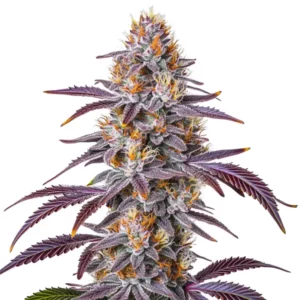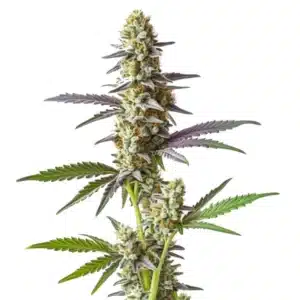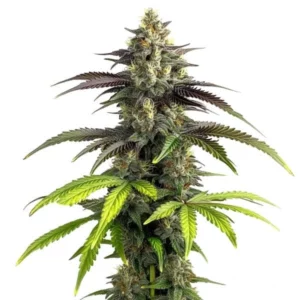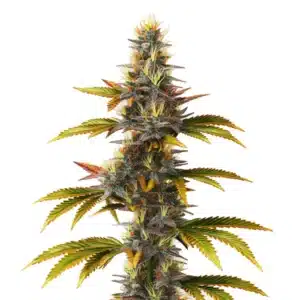What Are Hydroponic Cannabis Grow Kits?
Hydroponic cannabis grow kits are a revolutionary way to cultivate cannabis, relying on nutrient-rich water instead of soil to nourish the plants. These kits provide all the necessary components to create a controlled environment where plants can thrive. By using these kits, growers eliminate the unpredictability that comes with soil, such as pests, nutrient deficiencies, and improper drainage. Hydroponics ensures that your plants receive a balanced diet of nutrients, oxygen, and water, leading to optimal growth and superior quality harvests.
One of the main advantages of hydroponic grow kits is the level of customization they allow. Growers can adjust light schedules, nutrient concentrations, and other environmental factors to meet the specific needs of different cannabis strains. This level of control is especially beneficial for cultivators looking to produce consistent, high-quality yields. Additionally, hydroponics enables growers to experiment with new techniques and systems, such as aeroponics or vertical farming, to further maximize space and efficiency.
Promos & Deals
The Benefits of Hydroponic Growing
Hydroponic growing offers numerous benefits that make it an attractive option for cannabis cultivators. One of the most significant advantages is the speed at which plants grow. In a hydroponic system, plants have direct access to water and nutrients, which accelerates the vegetative and flowering stages. Many growers report that their plants grow up to 50% faster than in traditional soil, allowing for more harvests per year.
Another benefit is the ability to conserve water. Unlike soil, where much of the water is lost through runoff or absorbed by the earth, hydroponic systems recycle water through a closed-loop system. This results in a significant reduction in water usage, making it an environmentally friendly option. Moreover, because there is no soil involved, growers can reduce the risk of soil-borne diseases and pests, which means fewer pesticides and chemicals are needed, leading to a cleaner and more organic final product.
Key Components of a Hydroponic Grow Kit
Hydroponic grow kits are designed to provide everything you need to start growing cannabis without soil. One of the most important components is the reservoir, where the nutrient solution is stored and circulated. The size of the reservoir will depend on the number of plants you are growing, and it should be large enough to hold several gallons of water. Most kits also include a pump, which is essential for moving the nutrient solution from the reservoir to the plant roots.
The growing medium is another vital element in hydroponic systems. While soil is replaced by mediums such as rockwool, coco coir, or clay pellets, these substances support the plants’ roots while allowing them to receive water and nutrients. Grow lights are also an integral part of the kit, as cannabis plants grown indoors rely on artificial light for photosynthesis. High-quality LED or HPS lights are often included in kits to ensure that your plants receive the appropriate light spectrum throughout their growth cycle.
Alongside these components, pH and EC meters are used to monitor the water’s acidity and electrical conductivity, ensuring an optimal environment for the cannabis plants. Air stones and air pumps help oxygenate the water, preventing root rot and promoting healthy growth. By controlling these factors, hydroponic grow kits offer a more predictable and manageable growing process, helping growers achieve consistent results with each crop.
Different Types of Hydroponic Systems
Hydroponic systems come in various forms, each offering different advantages and challenges. The type of system you choose will largely depend on your experience level, the space available, and your specific growing goals. Each system operates on the same basic principle: providing nutrient-rich water to the plant roots. However, the method of delivery and the complexity of the system can vary significantly.
One of the most popular systems is the Deep Water Culture (DWC), where plants are suspended above a reservoir of nutrient-rich water, and their roots are submerged. This system is known for its simplicity and high efficiency. Nutrient Film Technique (NFT) is another option that involves a continuous flow of nutrient solution over the roots in a shallow stream. This system is highly effective but requires careful monitoring of the water flow to prevent the roots from drying out.
For those looking for more automation, the Ebb and Flow (Flood and Drain) system may be appealing. This system periodically floods the grow tray with nutrients and then drains back into the reservoir, mimicking the natural irrigation of soil but with greater efficiency. Drip systems are another popular option, using a slow drip of nutrient solution directly onto the roots. This system is highly customizable, allowing growers to adjust the flow rate depending on the plant’s needs.
Deep Water Culture (DWC)
Deep Water Culture (DWC) is one of the simplest yet most effective hydroponic systems. In DWC, plants are suspended above a nutrient-rich water reservoir, and their roots dangle directly into the water. An air pump constantly oxygenates the water, ensuring that the roots receive a steady supply of oxygen along with nutrients. This method promotes rapid growth and healthy root development, leading to bigger and faster yields.
One of the main advantages of DWC is its simplicity. There are few moving parts, which means there is less risk of mechanical failure. This makes DWC an excellent choice for beginners who want to try hydroponics without investing in a more complex system. However, it’s important to maintain proper water temperature and oxygen levels, as stagnant water can lead to root rot if not adequately aerated.
Nutrient Film Technique (NFT)
Nutrient Film Technique (NFT) is a popular hydroponic system where a thin film of nutrient solution flows over the roots of the cannabis plants. The roots are partially exposed to air, allowing them to absorb oxygen while the nutrient solution provides water and essential nutrients. This system is highly efficient, using minimal water and nutrients while promoting rapid root development and plant growth.
One of the challenges of NFT systems is maintaining a consistent flow of nutrients. If the pump fails or the flow is interrupted, the roots can dry out quickly, leading to plant stress or even death. Therefore, NFT systems are often better suited for experienced growers who are comfortable with the technical aspects of hydroponics and can closely monitor their setup.

Choosing the Right Hydroponic Grow Kit for Cannabis
Selecting the right hydroponic grow kit for cannabis depends on various factors, such as space, budget, and experience level. Beginners may prefer simpler systems that require less maintenance and monitoring, such as wick systems or drip systems. These kits provide a gentle introduction to hydroponics, allowing growers to experiment without the complexities of more advanced setups.
For those with more experience or who are looking to maximize yields, a Deep Water Culture or Ebb and Flow system might be a better fit. These systems require more attention but offer significant benefits in terms of growth speed and yield size. Additionally, the choice of kit will depend on the available space. Compact systems are ideal for small grow tents, while larger setups may require dedicated grow rooms with proper ventilation and space for grow lights and multiple plants.
Another consideration is the budget. Hydroponic grow kits can vary significantly in price, with simpler systems costing under $200, while more advanced setups can cost several hundred dollars. It’s important to factor in additional costs, such as grow lights, nutrients, and monitoring tools, which may not be included in the initial kit. Investing in a quality kit can save money in the long run by reducing the risk of crop failure and increasing yields.
Essential Nutrients for Hydroponic Cannabis
Hydroponic cannabis plants require a carefully balanced nutrient solution to thrive, as they don’t have access to the natural nutrients found in soil. The primary nutrients for cannabis plants include nitrogen, phosphorus, and potassium, collectively known as NPK. These macronutrients are essential for the different stages of plant growth. Nitrogen is particularly important during the vegetative stage, promoting the development of strong stems and leaves.
Phosphorus plays a key role during the flowering stage, aiding in the formation of buds and improving overall plant health. Potassium, on the other hand, supports various physiological functions, including nutrient transport, enzyme activation, and water regulation. In addition to macronutrients, cannabis plants also require micronutrients such as calcium, magnesium, and sulfur. These elements help to strengthen the cell walls, enhance chlorophyll production, and support overall plant health.
When using a hydroponic system, it’s important to use nutrient solutions specifically designed for cannabis cultivation. These solutions are formulated to provide the right balance of nutrients at each stage of growth. Growers should also regularly test the water’s pH and electrical conductivity (EC) levels to ensure that the plants can absorb the nutrients effectively. A pH level between 5.5 and 6.5 is optimal for cannabis, and regular adjustments may be needed to maintain this range.
Monitoring and Adjusting pH Levels
Maintaining the correct pH level in your hydroponic system is essential for cannabis plants to absorb the nutrients they need. If the pH level is too high or too low, certain nutrients may become unavailable to the plants, leading to deficiencies and stunted growth. For this reason, it’s important to regularly test the pH of your nutrient solution using a pH meter. Many hydroponic kits come with these meters, but they can also be purchased separately.
If the pH level falls outside the ideal range of 5.5 to 6.5, you can adjust it using pH up or pH down solutions. These products are designed to safely raise or lower the pH of the water without harming the plants. In addition to pH, it’s important to monitor the water’s electrical conductivity (EC), which measures the concentration of nutrients in the solution. A high EC level can indicate that the nutrient solution is too concentrated, while a low EC level may mean that the plants are not receiving enough nutrients.
Maintaining consistent pH and EC levels will help ensure that your cannabis plants remain healthy and continue to grow at an optimal rate. Regular monitoring is especially important during the flowering stage, as nutrient imbalances can affect the quality and quantity of your final harvest.

FAQs
What is the easiest hydroponic system for beginners?
For beginners, the wick system and drip system are the easiest hydroponic setups to start with. The wick system uses a passive method of delivering nutrients to the plants, meaning it doesn’t require pumps or complex components. It’s low maintenance and easy to set up, making it ideal for those new to hydroponics. The drip system, while slightly more advanced, is still manageable for beginners. It provides a controlled delivery of nutrients directly to the plant roots through a series of drip emitters, which can be adjusted to meet the needs of the plants.
Both systems allow beginners to learn the basics of hydroponic growing without needing to invest in expensive or complicated equipment. Once you become more comfortable with the process, you can explore more advanced systems like DWC or NFT. These systems offer faster growth rates and higher yields but require more hands-on management and monitoring.
How often should I change the nutrient solution in a hydroponic system?
The nutrient solution in a hydroponic system should typically be changed every one to two weeks. Changing the solution regularly ensures that your plants receive a fresh supply of nutrients and prevents the build-up of salts and other residues that can accumulate over time. However, the frequency of changes can also depend on the size of your reservoir, the stage of plant growth, and the number of plants in the system.
During the vegetative stage, when plants are rapidly growing, you may need to change the nutrient solution more frequently to prevent nutrient imbalances. In contrast, during the flowering stage, you can often go longer between changes, as the plants are focused more on bud production. It’s also important to regularly check the pH and EC levels of your solution between changes to ensure that your plants are receiving the proper nutrient concentrations.
Can I use tap water in my hydroponic system?
Tap water can be used in hydroponic systems, but it’s important to check its quality before using it. Tap water often contains chlorine and other minerals that can affect plant health. High levels of chlorine, for example, can damage the roots and reduce nutrient uptake. If you decide to use tap water, it’s a good idea to let it sit for 24 hours before adding it to your system, allowing the chlorine to evaporate.
Alternatively, you can use a water filter or a reverse osmosis system to remove chlorine and other impurities from the water. This is especially important if you live in an area with hard water, as excess minerals like calcium and magnesium can accumulate in the system over time and cause nutrient lockout. Distilled or filtered water is often the best option for hydroponics, as it provides a clean, neutral base for mixing nutrient solutions.
What is the ideal temperature for hydroponic cannabis growing?
The ideal temperature for hydroponic cannabis growing is between 70-85°F (20-30°C) during the day, with a slight drop at night to around 60-70°F (15-20°C). Maintaining stable temperatures within this range promotes optimal growth, allowing cannabis plants to photosynthesize efficiently and absorb nutrients properly. Temperatures that are too high can cause heat stress, leading to slower growth, while temperatures that are too low can stunt development and increase the risk of mold and mildew.
In addition to air temperature, it’s also important to monitor the temperature of the nutrient solution in your reservoir. Ideally, the water temperature should be kept between 65-70°F (18-21°C) to ensure that the roots receive enough oxygen. Warmer water holds less oxygen, which can lead to root rot and other problems. Using an aquarium heater or chiller can help regulate water temperature and maintain a healthy environment for your plants.
How much light does a hydroponic cannabis plant need?
Cannabis plants require a specific light schedule to thrive in a hydroponic system. During the vegetative stage, cannabis typically needs 18-24 hours of light per day. This extended light period encourages rapid growth and the development of strong, healthy foliage. As the plants transition into the flowering stage, the light cycle is reduced to 12 hours of light and 12 hours of darkness per day. This shift signals the plants to begin producing flowers or buds.
The type of grow lights you choose also plays a significant role in the plant’s development. LED grow lights are popular due to their energy efficiency and ability to provide a full spectrum of light that mimics natural sunlight. High-Pressure Sodium (HPS) lights are another option, known for their ability to produce large yields during the flowering stage. It’s important to position the lights at the correct distance from the plants to avoid light burn, while still providing enough intensity for healthy growth.
















